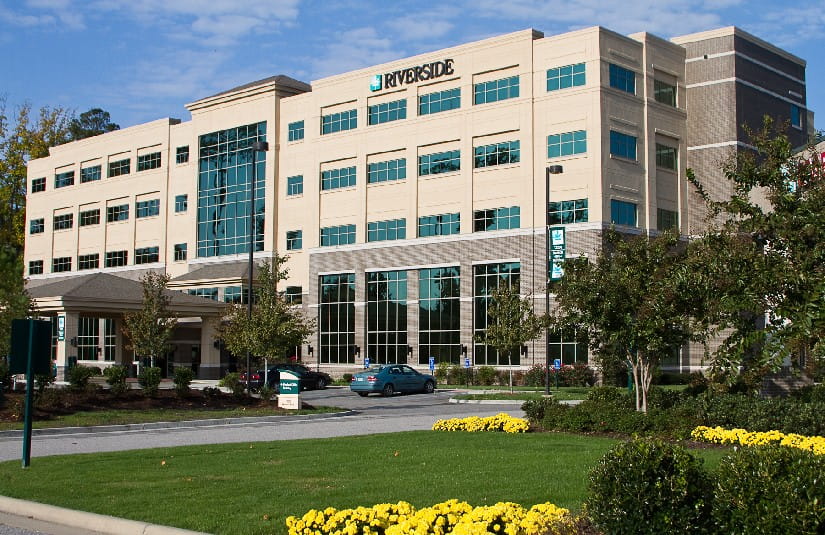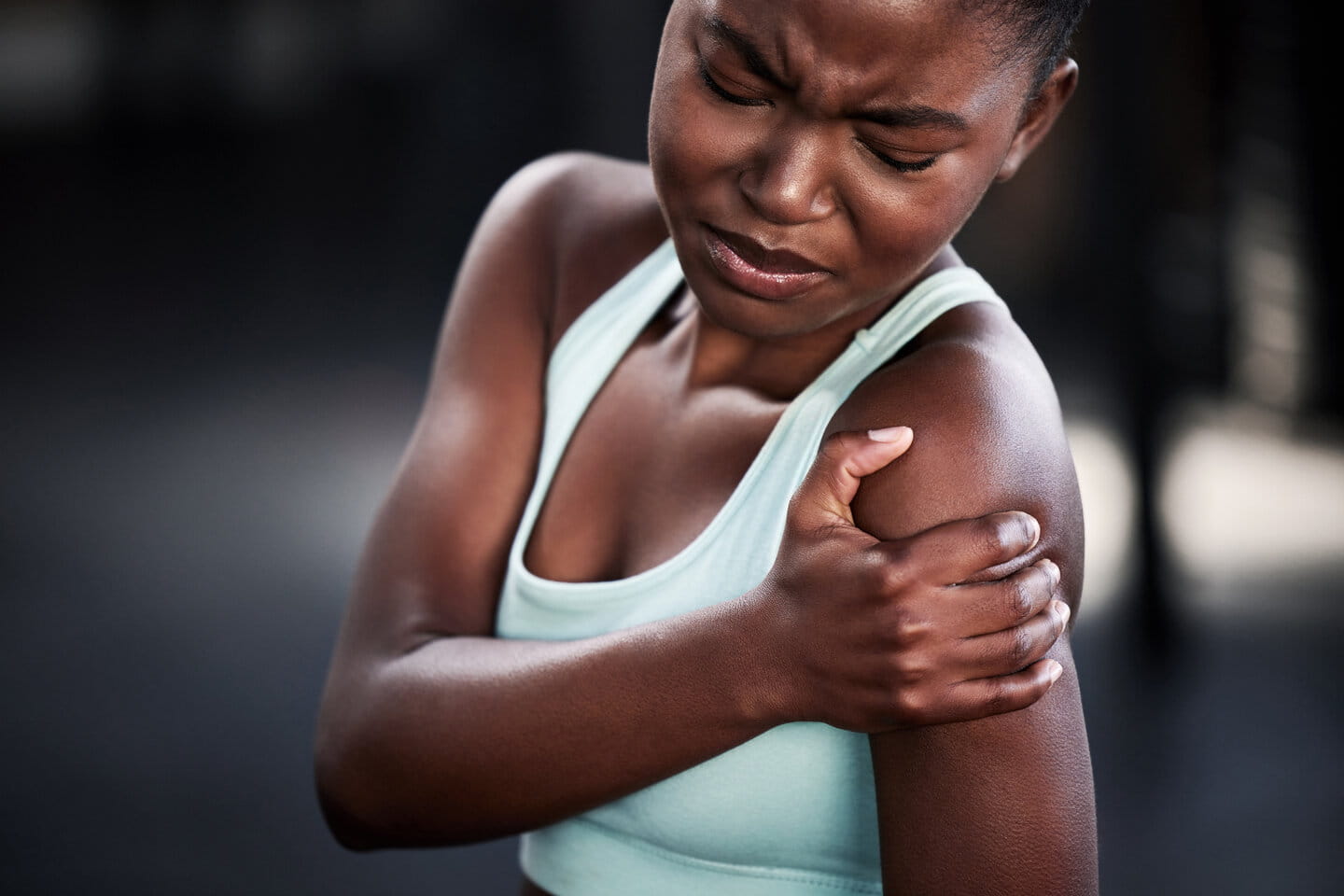Expert Diagnosis and Treatment to Get You Back in the Game
For athletes who love their sports, sudden injuries can be devastating. Rehabilitation can mean less practice time, fewer games and competitions and fewer chances to reach your goals and help your team win. At Riverside Orthopedics & Sports Medicine, we understand because many of us are athletes, too. When you’re injured, our team works with you to get you back to doing what you love as quickly and safely as possible.
When pain or injury sidelines your game, you need answers fast. Our sports medicine specialists provide thorough, accurate evaluations to pinpoint the problem and create a plan for recovery. From fractures and joint injuries to overuse conditions, muscle tears and tendon inflammation, we treat the full spectrum of sports-related issues. Explore the list below to learn more about common injuries and where they occur.
- Concussions: A traumatic brain injury caused by a blow or bump to the head with symptoms that can be mild or severe.
- Second Impact Syndrome: A second head injury that occurs before the first head injury has had time to fully heal.
- Brachial Plexus Neuropraxia (“Burners” and “Stingers”): Tingling or burning pain, similar to the feeling of an electric shock, that spreads from shoulders to the hand. Most often caused by injuries to a network of neck nerves that control movement and sensation in the shoulders, arms and hands.
- Acromioclavicular Joint (AC) Injury: Also known as a “shoulder separation” occurs when the AC joint separates from the shoulder blade, often as a result of a direct fall on the shoulder.
- Dislocations and Partial (Subluxation) Dislocations: Occurs when the upper arm bone slips out of the socket in the shoulder blade, and the dislocation can cause the joint to slide forward (anterior) or backward (posterior), although sliding forward is most common.
- Shoulder Labrum Tears: Occurs when the ring of cartilage surrounding the shoulder socket, called the labrum, tears. The labrum helps keep the joint stable, so a tear in this tissue can cause clicking, catching or instability in the shoulder.
- Rotator Cuff Injuries: The rotator cuff, composed of four muscles and tendons to stabilize the shoulder joint, can become worn and tear with overuse, causing pain and shoulder weakness that sometimes requires surgery to fix.
- Golfer’s Elbow (Medial Epicondylitis): Occurs when the tendons that attach to the inner part of the elbow become irritated or damaged from overuse. Pain from golfer’s elbow can be felt on the inside of the elbow.
- Tennis Elbow (Lateral Epicondylitis): Occurs when the tendons in the elbow are overworked, often in the wrist and arm, causing pain in the outer part of the elbow.
- Little League Elbow: A growth plate injury that occurs with repetitive throwing motions.
- Torn Distal Biceps Tendon: Often signaled by a sudden “pop” sound followed by sharp pain and a bulge, similar to a “Popeye” muscle in the upper arm, and typically requires surgery to treat.
- Back pain: Pain that develops due to problems with the spinal cord, vertebrae, discs, muscles, ligaments, tendons or nerves in the back.
- Lumbar strains: Overstretched or torn ligaments that connect bones in the lower back.
- Sacroiliac (SI) Dysfunction: Inflammation in the joint which connects the hip bones to the triangular bone between the lumbar spine and the tailbone; can cause lower back, hip and leg pain (sacrum).
- Hip Labrum Tears: Tears that occur in the ring of cartilage known as the “labrum” that lines the edge of the hip socket, causing pain, stiffness and instability.
- Sacroiliac (SI) Dysfunction: Inflammation in the joint which connects the hip bones to the triangular bone between the lower back and the tailbone (sacrum); causes lower back, hip and leg pain
- Illiotibial (IT) Band Tightness: Tightness in the tendon running along the outside of your leg from the hip to the knee most often caused by overuse.
- Medial Tibial Stress Syndrome/MTSS (Shin Splints): Pain in the front of the lower leg caused by overuse or repetitive stress.
- Anterior Cruciate Ligament (ACL) Injuries: Most commonly caused by a tear or excessive stretching of the ligament in the middle of the knee and prevents the shin bone from sliding out in front of the thigh bone.
- Meniscus Injuries: Wear on the cartilage cushions of the knee between the thigh bone and shin bone, called “menisci,” can lead to a torn meniscus.
- Osgood-Schlatter Disease (Osteochondrosis): Inflammation below the knee that is common in adolescents.
- Patellofemoral Pain Syndrome: Pain in the anterior (front) of the knee and around the kneecap.
- Patellar Tendinitis (“Jumper’s Knee” or “Runner’s Knee”): Inflammation of the tendon that attaches the bottom of the kneecap to the top of the shinbone.
- Achilles Tendinitis: One of the most common overuse injuries that is caused by irritation and inflammation of the large tendon that runs down the back of the lower leg.
- Achilles Tendon Rupture: A tearing and fraying of the tendon that runs down the back of the lower leg.
- Inversion “Lateral” Ankle Sprain: Over-stretched or torn ligaments supporting the ankle because the foot turns inward excessively.
- Medial Ankle Sprain: Stretched or torn ligaments in the inside of the ankle because the foot turns outward excessively.
- Plantar Fasciitis: Irritation and inflammation of a strong band of tissue that supports the arch of the foot.
Ready to Connect with a Sports Medicine Specialist?
With multiple offices across the region – including the Peninsula, Middle-Peninsula, Eastern Shore, Williamsburg and now in Smithfield – it’s easy to find a Riverside Orthopedic and Sports Medicine specialist close to home.

